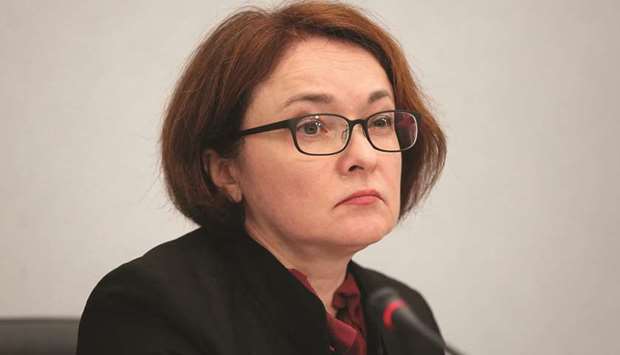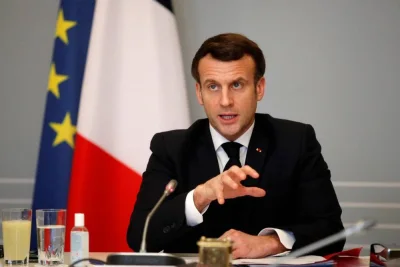The Bank of Russia cut interest rates by the most in five years and signalled another reduction is likely to help stimulate an economy heading toward a deep recession.
The benchmark interest rate was cut 100 basis points to 4.5%, the lowest level since inflation-targeting began in late 2014, the central bank said in a statement yesterday. Policy makers warned that a slump this quarter could be worse than expected and inflation could “significantly deviate” from a 4% target next year.
After years of keeping borrowing costs in Russia relatively high, governor Elvira Nabiullina is catching up with other central bankers in slashing rates.
The economy of the world’s biggest energy exporter took a double hit this year from the coronavirus pandemic and slump in oil prices.
“The Bank of Russia finally delivered a proper rate cut after adopting a far more cautious approach compared to other emerging-market central banks,” said Piotr Matys, a strategist at Rabobank in London. “The official statement paints to a very grim picture.”
Five-year government bond yields fell the most in more than a month to trade near a record low and the rouble largely held onto gains. Government bonds have rallied in recent months in expectation of monetary easing.
Rate cuts of a full percentage point won’t become the norm for the central bank, which prefers to move in smaller steps, Nabiullina said at a news briefing yesterday. “A pause is possible, but so is another reduction,” said Nabiullina, who was wearing a brooch in the shape of a dove.
She has used pins as a way to send playful signals at the past two rates briefings. In April her brooch was in the shape of a house after President Vladimir Putin told people to stay home due to the pandemic.
The central bank forecasts that the economy may shrink as much as 6% this year and Nabiullina said yesterday a recovery could be longer than earlier expected.
Inflation was at 3.1% in mid-June, the bank said, and a recent slump in consumer demand due to Russia’s coronavirus lockdown is likely to add to disinflationary pressure. A 13% surge in the rouble against the dollar this quarter will also curb price growth, giving more room for easing, Nabiullina said.
“With price pressure so weak, the central bank is likely to ease further. Another move could come as soon as July, though on a smaller scale”, says Scott Johnson, Bloomberg Economics.
Nabiullina declined to comment on how low the key rate could go, but said the current easing cycle isn’t necessarily over.
Economists at Citibank in Moscow said last month that Russia could end up cutting the rate as low as 3%, without specifying timing.
“A move to sub-4% key rate in 2020 stays off the table for now,” said Dmitry Polevoy, chief economist at Russia’s sovereign wealth fund. “But never say never as there are still many unknowns in the Bank of Russia policy-setting equation.”

Nabiullina: A pause is possible, but so is another reduction.


